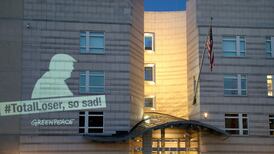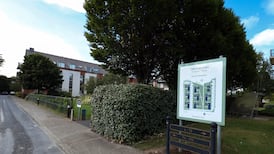Even the act of arriving into Nepal this time was chaotic.
The scale of need is so vast that aid agencies and search and rescue teams need to send in teams of humanitarian staff as well as huge stockpiles of supplies. The result is that there are far more planes than Kathmandu airport can handle – a shortage of parking spaces on the apron, with relief flights being prioritised. Our plane landed as scheduled, but others weren’t as lucky – two of my colleagues got re-routed to India, and then sent back to Abu Dhabi to wait for another flight.
These delays can be desperately frustrating when we are so close and so keen to help the people affected.
The streets are lined with sleeping families under plastic sheets. Even those who live in undamaged buildings are too afraid to return indoors for fear of further aftershocks.
I could never imagine returning to Nepal in such circumstances. I first travelled here in 2007, to take up a job with Concern. I lived and worked here for two years and alternated frequently between being in love with the country and being frustrated with its limitations.
I was devastated this week to read about the impact of the earthquake that rocked the country on Saturday. By Sunday afternoon, I had booked a ticket to Kathmandu.
Anyone who travels to Nepal will gush relentlessly about its natural beauty. They are rarely exaggerating.
The snowy peaks of the Himalayas are lifted straight off a postcard. Narrow, beaten lanes wind through Kathmandu as the snowy peaks look on from the valley rim. There is no shortage of picturesque lakes, panoramic views and trekking trails. Hindu and Buddhist temples are dotted across the country, lending culture and character to the landscape, and people wearing colourful clothes; It really is a breathtakingly beautiful country.
Nepal is not, however, heaven on earth. It is still ranked as one of the world’s poorest countries and the majority of its people are poor. I still remember the contrast between difficult the lives of everyday Nepalis were compared to ours in Ireland. Simple things, like getting to and from the project villages, were made needlessly laborious by a lack of surfaced roads and paths. In Kathmandu, many roads were adequate, but upon leaving the capital, mountainous rural areas had nothing but mud trails. These were often impassable when it rained, blocked with landslides.
I often say to people not to go to Nepal unless you like walking. Lots and lots of walking. One of the areas Concern worked in was a full three days’ walk from the office where I was based. Between the long walks and high altitude, I think I was never in better physical condition than when I lived in Nepal.
Arriving in Kathmandu yesterday was a real shock to the system. Although Nepal is prone to earthquakes due to its position on the Tibetan Plateau, the last major earthquake that damaged buildings in Kathmandu was in 1938. The earthquake that hit the country this week was a different animal altogether – it scored 7.8 on the Richter scale and has left eight million people in need of help. It was always the nightmare scenario we used to plan through preparedness measures. Now it has come to pass.
My overriding memory of Kathmandu itself is that of a dirty but beautiful city. Narrow lanes, steaming cups of hot spicy tea, winter hats to keep the chill out, glorious sunshine in the spring. I remember taking snapshots of the Dharahara tower, an imposing and striking historical structure in Kathmandu that was named a Unesco World Heritage site. Now that I am here, this tower is gone, reduced to rubble in the earthquake. The photos I have from before no longer capture a tourist attraction; rather they are a historical record of a building that once was.
At least four out of seven of the Unesco World Heritage sites in the Kathmandu valley have been severely damaged. Where does this leave the future of Nepal when their economy relies so heavily on income from tourists who travel to see these sites?
Although Concern closed its operations here in 2010, we still have close relationships with former partners and are linking directly with them to respond to this disaster. We are now putting a starter plan together with the information we have, identifying assessment areas and initial needs, and then we’ll head out of Kathmandu, in search of those in remote areas who have not yet been able to get help.
I can only hope I can contribute in some way to getting the country back to some sense of normalcy, and to help those who were suddenly made homeless overnight.
Dom Hunt, Disaster Risk Reduction Adviser, worked with Concern Worldwide in Nepal from 2007 to 2009. He returned there this week as part of Concern Worldwide’s Emergency Response Team to the earthquake






